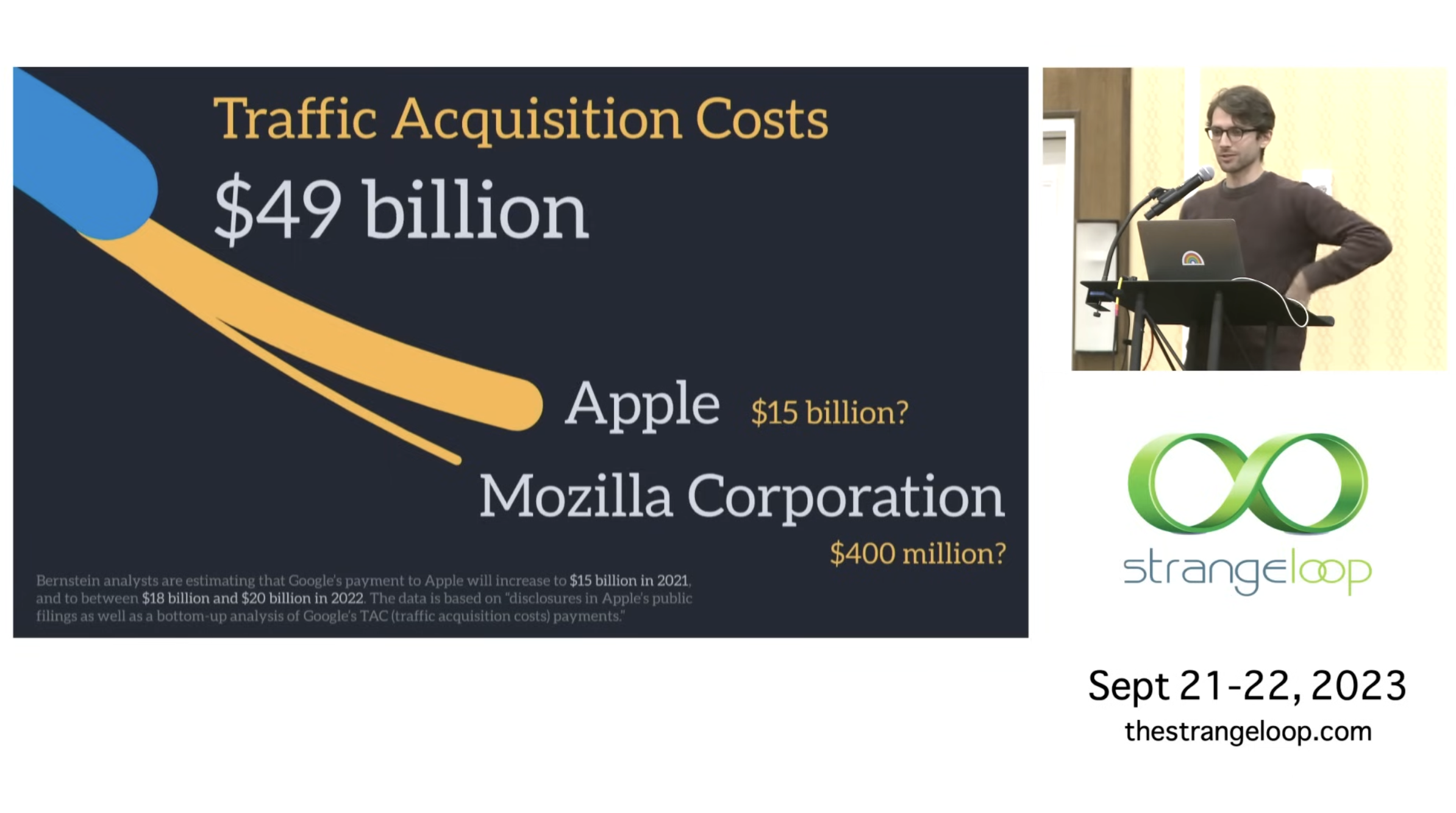I watched a talk from Evan Czaplicki, creator of the Elm programming language, called “The Economics of Programming Languages”.
It’s a fascinating look at how a small OSS project like Elm has to compete in a world where many of the expectations around developer experience for a programming language are set by companies who take in billions in revenue.
One of Evan’s assertions is that the largest source of money flowing into the world of programming languages comes from Google paying to be the default search engine (a fascinating idea, be sure to watch the entire talk to understand why).
According to Evan, Google took in $283bn in revenue in one year. Of that, $49bn went towards “traffic acquisition costs” which includes Google paying other browsers for the preference of being the default search engine.

How much exactly? Google paid Firefox roughly $400 million while Safari got somewhere in the range of $15-20bn.[1]
Microsoft, however, reserves the right to make Bing the default search engine in their browser.
Evan points out that, according to SEC filings, “Search and news advertising” revenue for Microsoft is approximately $12bn. This means if Microsoft put 100% of their revenue from Bing towards paying to be the default search engine on Safari, they’d still have to come up with at least another $3bn out of pocket.
As you can see, a browser’s URL/search bar is an expensive piece of real estate. Those who own it get a slice of that $49bn “traffic acquisition cost” cheese from Google.
Which kind of gets me thinking that perhaps a rather reasonable business idea is: make a kick-ass browser that people love, strive for even 0.5-1% of browser market share, and then sell your default search preference.
In other words, getting Google to fund your amazing idea for an alternative browser doesn’t seem that wild?
All of this really drove home that the browser URL bar doubling as a search input has to be the single largest money-printing UI element ever made.
